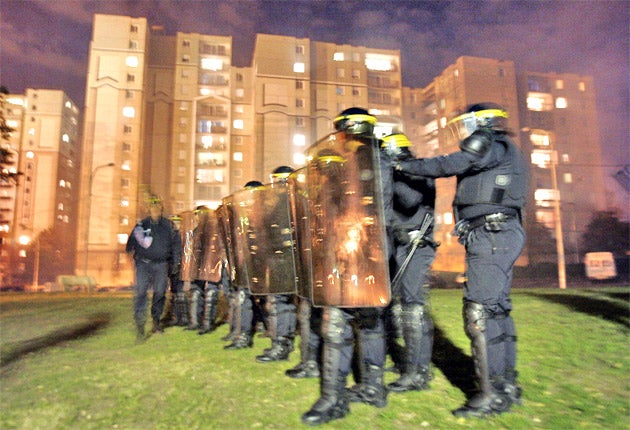The French precedent: Restraint and a curfew were key to restoring order in the banlieues

There are striking similarities between the English riots of August 2011 and the three weeks of French suburban émeutes in October and November 2005.
Unlike over the last three nights in London, however, looting was not a big issue in France in 2005. The banlieues riots became an orgy of community "self-harm" rather than an excuse for mass theft. The French rioters did not target shops but cars, buses, schools, libraries and sports and community centres. Nonetheless, the experience of the French authorities offers some lessons to the British Government. And the biggest is, perhaps, an unpalatable one. Confrontation is counter-productive. Riots, as an outpouring of urban anger, are best left to burn themselves out. On the other hand, curfews do help by giving the weapon of control to parents and community leaders.
The French riots provoked a great deal of schadenfreude in the Anglo-Saxon press at the time. They were portrayed as the defeat of an uncompromisingly mono-cultural French approach to immigration. They were even, quite wrongly, described as a kind of Islamist intifada.
The French violence began with the deaths of two teenage boys of Arab origin. Their deaths, after running into an electricity sub-station, were blamed by their friends on the police (rightly, it emerged later). The incident sparked riots in Montfermeil and Clichy-sous-Bois, suburbs north-east of Paris. Long-simmering ill-feeling between the police and local youths caused the violence to spread to other poor suburbs of Paris and, within days, to almost every town and city in France.
The internet and mobile phones were used by the rioters to outwit the authorities. Although called "riots", there were few large mobs and set-piece battles. Over 9,000 cars and 300 public buildings were set alight in the space of 20 days, mostly in hit-and-run attacks.
An official report by the security services later concluded that the violence was inspired by hatred of the police, unemployment, hopelessness and a copy-cat desire to have the same fun as the next town or housing estate.
The French riots began to abate after 7 November 2005 when the government declared a state of emergency and a curfew, which strengthened the hand not just of police but also, crucially, of parents and community leaders. All but the hard-core of rioters – mostly aged between 14 and 19 – were gradually persuaded to stay at home.
The second thing the British authorities could learn from the French is the relative restraint displayed by their riot police. Those calling in Britain for the deployment of soldiers – comparatively untrained in street control – should perhaps think again.
Subscribe to Independent Premium to bookmark this article
Want to bookmark your favourite articles and stories to read or reference later? Start your Independent Premium subscription today.

Join our commenting forum
Join thought-provoking conversations, follow other Independent readers and see their replies